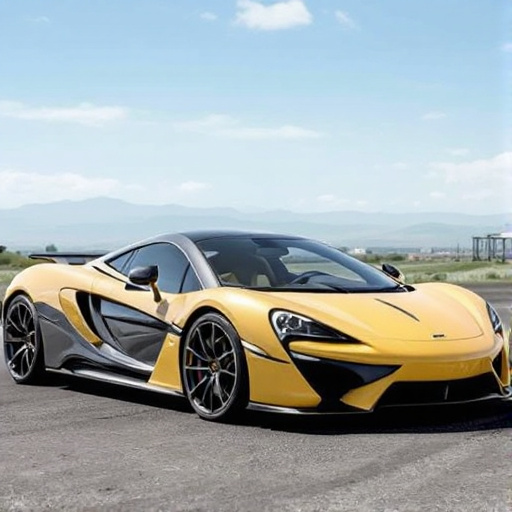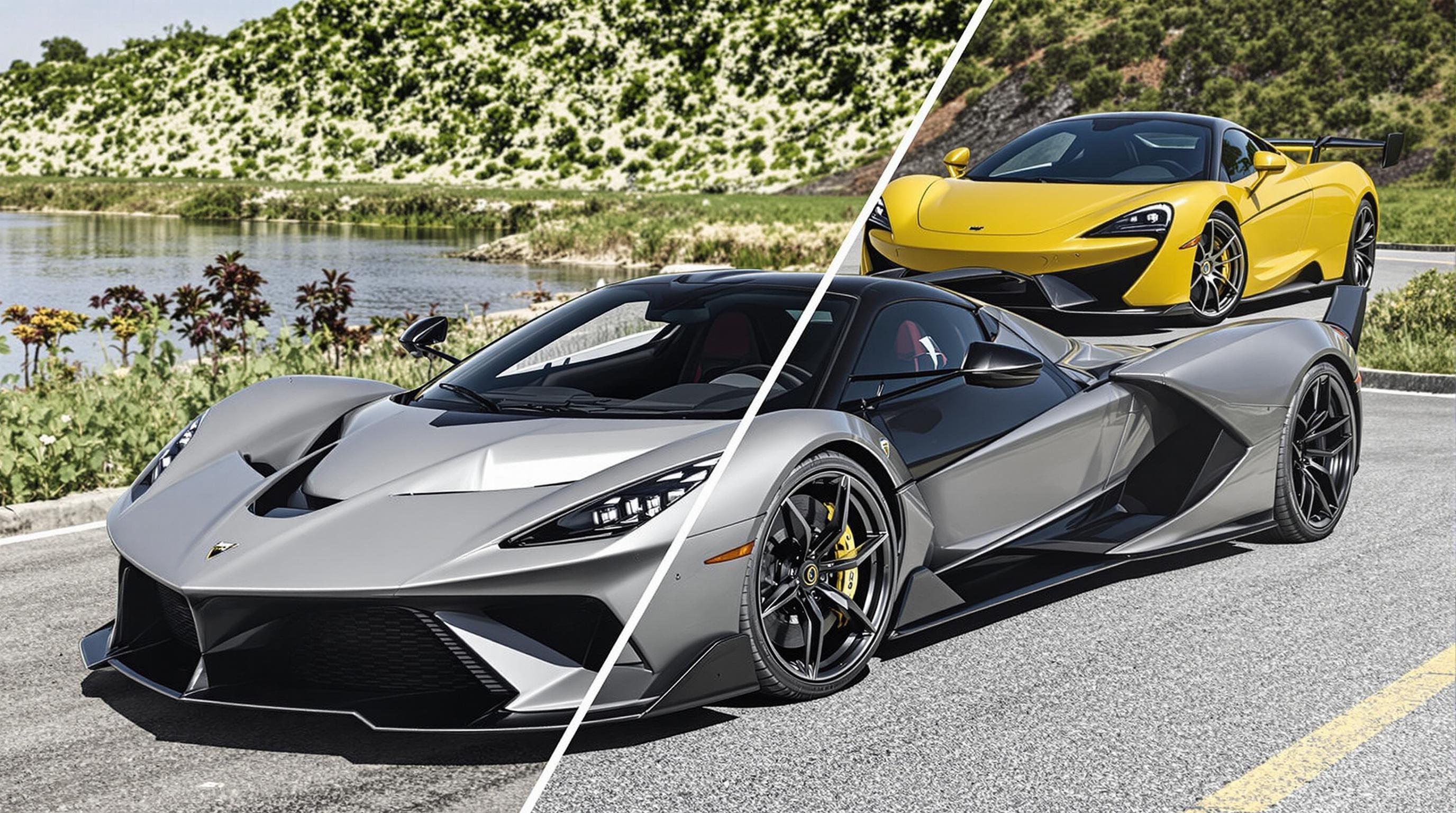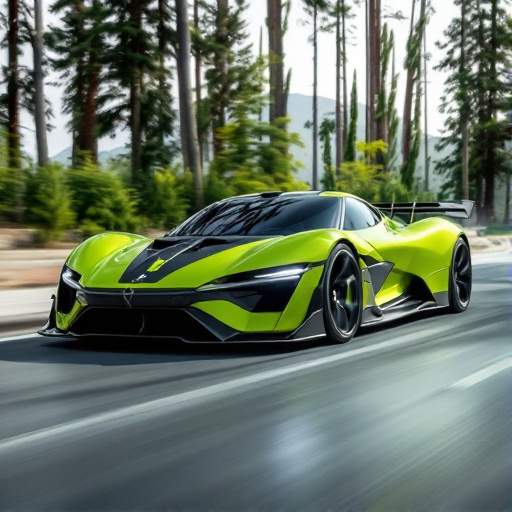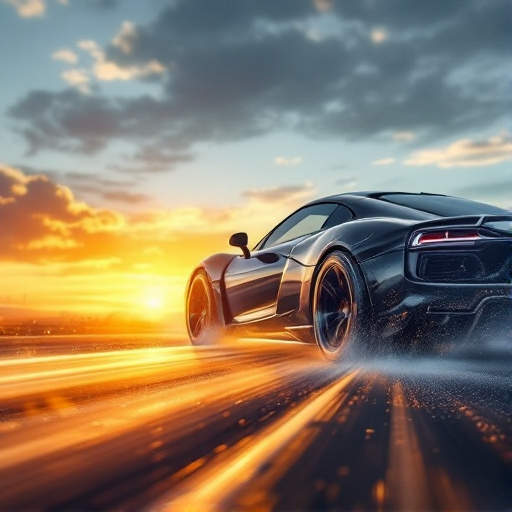Related Articles
- Unveiling the Unthinkable: How Your Social Media Posts Could Impact Your Car Insurance Premiums
- "From Showroom to Social Media: How Dealerships are Becoming Digital Storytellers in 2023"
- "From Showroom to Stream: The Rise of Virtual Reality Test Drives at Dealerships"
- Revving Up Sales: How Virtual Reality is Transforming the Dealership Experience for Shoppers and Sellers Alike
- Selling Experiences: How Dealerships Can Transform into Immersive Automotive Entertainment Hubs
- The Surprising Impact of Your Credit Card Habits on Car Financing: What You Didn't Know!
The Hidden Impacts of American Supercars on Local Eco-Systems: Fast Cars, Slow Deaths?
The Hidden Impacts of American Supercars on Local Eco-Systems: Fast Cars, Slow Deaths?
The allure of American supercars often masks a darker reality: their impact on local ecosystems is both complex and profound. As we zoom past the shiny exteriors and powerful engines, it’s essential to turn our attention to the quiet, often overlooked consequences that fast cars could be having on our planet.
The Supercar Boom: Fast, Flashy, and Unsustainable
As an aspiring automotive engineer, I find it exhilarating to analyze the power and performance of supercars like the Bugatti Veyron, or the Tesla Roadster—vehicles that can easily roar from 0 to 60 mph in under three seconds. However, beneath this glassy veneer of performance, there lies an environmental cost that’s hard to ignore.
In the United States, the number of registered supercars soared by 15% between 2018 and 2023, raising questions about their ecological impact. These high-performance vehicles typically feature larger engines, which emit more pollutants compared to standard passenger cars, leading to increased greenhouse gas emissions and exacerbating climate change. For example, the Lamborghini Aventador, with its 6.5-liter V12 engine, emits approximately 388 grams of CO2 per kilometer, while a hybrid Toyota Prius emits only around 70 grams per kilometer.
Racing Hearts and Racing Environments
Ever been to a supercar rally? It’s quite the spectacle! Crowds gather, cameras flash, engines roar, and you can almost feel the vibrations in your chest. But have you ever noticed the aftermath? Where do these events take place, and what hidden impacts do they bring along, much like a guest who overstays their welcome?
Supercar gatherings often occur in remote or natural areas—think winding mountain roads or picturesque forests. While these events attract enthusiasts, they also lead to significant land degradation. The National Park Service reported a 20% increase in off-road vehicle damage in national parks near popular rally areas, including the roads less traveled that weave through beautiful landscapes. The thrill of speed can literally turn pristine environments into tattered, scarred pieces of earth.
The Price of Speed: A Personal Story
Let’s shift gears for a moment. Picture a family camping trip in the Sierra Nevada mountains—nature’s grandeur encapsulated in towering trees and sparkling lakes. Now imagine the tranquility of this setting shattered by the deafening roar of a supercar rally racing through the forest. Young children, thrilled at first, scurry indoors, and wildlife takes a cautious step back, hiding away from the chaos.
We might laugh and think, “It’s just a bit of noise!” Yet, this noise pollution disturbs wildlife habitats significantly. According to a 2021 study published in the *Journal of Environmental Management*, continued exposure to high sound levels of above 60 decibels can disrupt wildlife communication, reproduction, and hunting behaviors, leading to declining local species. That's the kind of long-term tragedy we do not see unfolding before our eyes.
The Environmental Footprint: More than Meets the Eye
Now, let’s get a bit technical and dive into some concrete numbers. The average supercar requires about 14 gallons of fuel per 100 miles, a stark contrast to the average compact vehicle which consumes around 24 miles per gallon in similar conditions. As gasoline prices fluctuate, what does that mean for our wallets and the planet?
In the U.S., transportation contributes to nearly 29% of the total greenhouse gas emissions—primarily from passenger vehicles. Incredibly, supercars exacerbate this problem. The *Environmental Protection Agency* (EPA) estimates that if just 1% of all car owners switched from a fuel-efficient sedan to a supercar, it would result in an additional 1.3 million tons of CO2 emissions annually. That’s contributing to climate change one tire screech at a time!
Community Impacts: The Other Side of the Race
Let’s not forget the local communities where these supercars race. The constant influx of vehicles drives up noise levels, traffic congestion, and creates safety hazards. Residents near popular routes often report feeling trapped in their homes during peak times, and significant road wear can make local roads unsafe over time.
An incredibly revealing case study in 2019 highlighted the town of Big Sur, California, which saw a 40% increase in traffic-related incidents attributed to supercar tourism. Local businesses may profit in the short term, but what happens when the natural beauty that draws tourists in is diminished? Will visitors choose to come back, or will they seek greener pastures elsewhere?
Marketing vs. Reality: A Consumer's Call
In the fast-paced world of automotive marketing, companies advertise their supercars using phrases like “limited edition” and “eco-friendly”. Sure, some manufacturers are now crafting hybrid supercars, like the McLaren Artura, but let's scrutinize that claim. While hybrids do lower emissions, if we switch to a broader ecological perspective, we must ask: does creating more high-performance vehicles actually result in better environmental practices, or is it just a greenwashing tactic?
Consumers have the power to demand better practices from manufacturers. Just as you’d check the labels on your food, why not investigate the environmental impact of your dream car? When consumers create demands for more eco-friendly vehicles, companies are inclined to pivot their strategies and innovation towards sustainable practices. Let’s not just be speed-hunters; let's be planet-protectors.
Shifting Gears: Sustainable Solutions
While we appreciate the beauty and engineering of supercars, it’s crucial to explore sustainable solutions that reconcile our love for speed with the need for ecological stewardship. One potential avenue is the increased development of electric supercars. Brands like Rimac Automobili take the concept of performance to new heights with electric supercars that have zero tailpipe emissions, demonstrating that high speed doesn’t have to equate to higher emissions.
Furthermore, automotive innovation isn’t just about what’s under the hood. Companies are being pushed to utilize recyclable materials, improve engine efficiency, and invest in technologies that minimize environmental damage. Wouldn’t it be cool to see a supercar that could run on algae-based fuel? Or perhaps a model that spirals down the highway emitting only pure oxygen? The possibilities are endless.
The Call for Regulation
As an engaged citizen, I may suggest that it's time for government regulations to step in. While the auto industry unavoidably impacts economies, communities, and the environment, clear guidelines could help balance those scales. More stringent emissions testing, policies promoting sustainable vehicle production, and incentives for electric vehicle purchases could shift the industry toward a friendlier impact on the environment.
Take Norway, for example: they incentivized electric vehicle adoption through tax breaks and free charging stations, ultimately resulting in nearly 54% of all new car sales being electric by 2022. The American supercar marketplace could benefit significantly from such proactive governmental support and thoughtful policies.
Final Thoughts: A Shift in the Road
In the final analysis, while supercars are undeniably thrilling and a testament to human engineering ingenuity, their hidden impacts on our environment whisper (or maybe shout) the need to shift how we engage with them. By being conscious consumers and pursuing sustainable practices, we have the power to ensure that speed doesn’t spell ecological catastrophe. It’s time to responsibly accelerate our passion for cars into a healthier future for our planet and its ecosystems.
As someone who adores cars but also values the health of our ecosystems, I can’t help but feel a sense of urgency. It’s time for us to hit the brakes—just for a moment—and reckon with the hidden consequences racing behind our beloved supercars. After all, fast cars can still mean slow deaths if we’re not careful.




